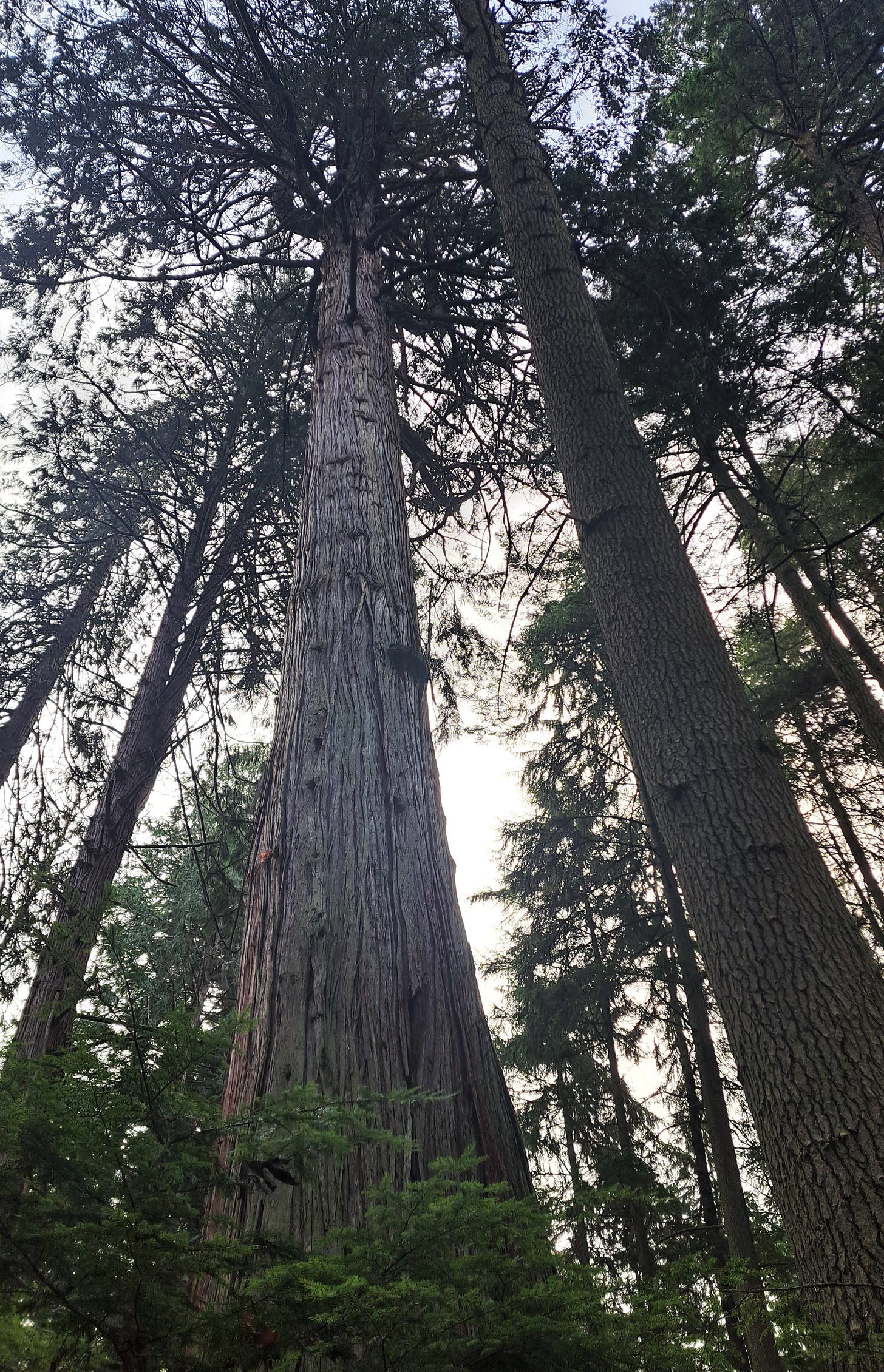I’m starting to think I may actually get there! To 70. It’s been a haul, but a ton of fun. And it’s great to feel like I’m still in fine hiking condition even in January. But I’d better not jump the gun. As of this morning, I still needed four more summits by February 1st. To complicate things, I’ve agreed to take a temp job with a bunch of overtime starting any day now. Which was another reason to get my backside out there again today.
With the promise of some seriously cold weather moving in by late afternoon, I also realized I needed to get down to Anacortes to plug in a small heater in a shared sailboat (freezing pipes and all). I sent a text to Keith. Ginnett Hill near Anacortes? Yep, he was up for another hike.
I think he saw what I saw--the temp about to fall below freezing and not rebounding till next week. And wind with sub-zero will chill. We may as well get out there while the gettin's still good.
We drove to the trailhead at Pass Lake near Deception Pass State Park and began our trek in sub-comfortable sunshine. We followed the John Tursi Trail, one of the very few trails within an hour of home that I'd never been on. However, Keith was already familiar with the area and offered insight on some interesting geology.
A beautiful walk among sizable Douglas firs with deeply furrowed bark gave way to openings of moss-covered bedrock rimmed with charismatic Madrona trees. An out-of-place looking concrete slab with a view marked the location of the former Ginnett homestead. An old mine shaft of the same name is along the trail nearby.
John Tursi, I should note, was a CCC worker way back in the day. More importantly, he was a major advocate for Fidalgo Island trails and conservation, and the largest donor in saving the Anacortes Community Forest Lands. The Tursi trail also doubles as a segment of the Pacific Northwest National Scenic Trail, which I’ll be writing more about soon.
At the Ginnett’s old rock quarry, Keith pointed out the unusual red rock, known as tuffaceous argillite, a kind of hard, metamorphosed mudstone that originated as volcanic ash millions of years ago. The quarry was the source of the red rocks found in the mosaic walls of Causland Park in Anacortes. Very cool.
We soon left the trail to look for the top of Ginnett Hill several hundred feet above. And we found it, of course, despite some annoying sticker bushes en route. We lunched atop my 67th summit just long enough to get chilled, as the arctic weather began to move in. We began the trek back to the truck, diverting briefly to see a giant red cedar tree, eight feet in diameter. Totals for the day: around five miles round trip and 1,100 feet ascended.
By the time we reached the boat at Cap Sante Marina, the wind had picked up and the temperature had dropped significantly. Fingers froze in the time it took to retie a fender, unlock the cabin top and plug in the heater. We were quickly done and on our way, with the boat smiling back at us.





